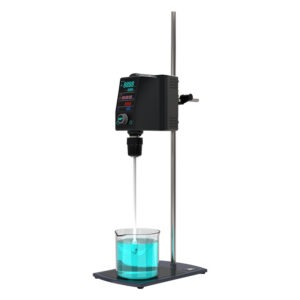
1. Introduction: The Digital Wave in Laboratories
With rapid advancements in technology, digitalization and automation are fundamentally changing how modern laboratories operate. In fields like chemistry, pharmaceuticals, and biological sciences, these technologies are enhancing efficiency, precision of data, and reducing human error. Laboratory equipment is increasingly integrating these technologies through automated control systems and real-time data collection, resulting in highly streamlined workflows.
2. Advantages of Automation Technology
Automation technology frees laboratory personnel from tedious manual tasks, allowing them to focus on experimental design and analysis rather than routine procedures. Key advantages of automation in laboratories include:
- Increased Efficiency: Automated devices can operate 24/7, handling tedious tasks such as sample processing and reaction control, significantly boosting experimental productivity.
- Reduced Errors: Human error is a primary source of data inconsistency in experiments. Automated reactors and sensors can precisely control parameters such as temperature, pressure, and stirring speed, ensuring high reproducibility.
- Real-Time Monitoring and Data Collection: Modern laboratory equipment is equipped with sensors and data acquisition systems, enabling real-time monitoring of critical parameters such as pH, temperature, and pressure, and automatically saving data for later analysis.
3. Empowering Laboratories with Digital Technology
Digitalization involves more than converting physical experimental data into electronic formats; it encompasses data management, analysis, and visualization technologies. With advanced Laboratory Information Management Systems (LIMS) and Artificial Intelligence (AI), labs can better organize and utilize experimental data:
- Laboratory Information Management Systems (LIMS): LIMS helps laboratories manage data, track samples, and generate automated reports. Researchers can access experimental results, workflow history, and data analysis through LIMS, improving laboratory efficiency.
- AI and Data Analysis: AI technologies are rapidly entering laboratory domains. By analyzing vast amounts of experimental data, AI can identify potential patterns and suggest optimized experimental conditions, saving time and resources.
- Internet of Things (IoT) and Smart Devices: IoT enables laboratory equipment to connect and communicate. Smart devices can transmit data wirelessly in real-time, automatically adjusting experimental parameters to ensure optimal workflow.
4. The Fusion of Automation and Digital Technology in Equipment
Modern laboratory equipment is beginning to integrate automation and digital technology. Here are several advanced devices that showcase this perfect blend:
- Automated Reactors: These systems can automatically adjust temperature, stirring speed, and reaction time based on pre-set programs, ensuring chemical reactions occur under optimal conditions. Researchers no longer need to manually adjust conditions, significantly increasing workflow efficiency.
- High-Throughput Screening Systems: This equipment can rapidly test multiple experimental conditions using robotic technology for sample preparation and data collection, making it suitable for large-scale screening experiments.
- Digital Temperature Control Systems: Modern temperature control devices not only accurately regulate experimental temperatures but also connect with management systems to monitor temperature changes in real time and automatically generate data reports.
5. Practical Applications of Automation and Digital Technologies
Here are some real-world applications of automation and digital technologies in laboratories:
- Automated Reactors in Organic Synthesis
A pharmaceutical company utilized automated reactors in their organic synthesis experiments to optimize catalytic reaction conditions. By automatically adjusting reaction temperature and stirring speed, they achieved higher product yields while reducing by-product formation during experiments. The automated reactors also featured real-time data acquisition systems, allowing experimental results to upload automatically to the LIMS for later analysis. - AI-Assisted Experimental Design
In materials science research, scientists employed AI systems to analyze past experimental data and propose new experimental combinations. By using intelligent data analysis, the AI was able to predict the most likely successful experimental schemes, significantly shortening the development cycle.
6. Trends for Future Laboratories
Future laboratories will increasingly rely on automation and digital technologies. Here are some anticipated trends:
- Fully Automated Laboratories: Future labs are expected to achieve fully automated workflows, where equipment can seamlessly integrate via IoT to conduct complex experimental protocols entirely on their own.
- AI-Driven Experimental Design: Future AI systems will be capable of self-learning, providing researchers with more experimental design suggestions, or even generating complete experimental protocols automatically.
- Virtual Laboratories: Virtual laboratory technologies are advancing rapidly, enabling researchers to control experimental equipment remotely through virtual reality, greatly expanding laboratory capabilities.
7. Conclusion
Digitalization and automation technologies are driving revolutionary changes in modern laboratories. Through the widespread application of automated reactors, AI-assisted design, and smart devices, laboratories are not only enhancing experimental efficiency but also minimizing human error and improving data management and analysis capabilities. As these technologies continue to evolve, automation and digitalization will pave the way for greater advancements and innovations in the fields of chemistry, pharmaceuticals, and biology.

